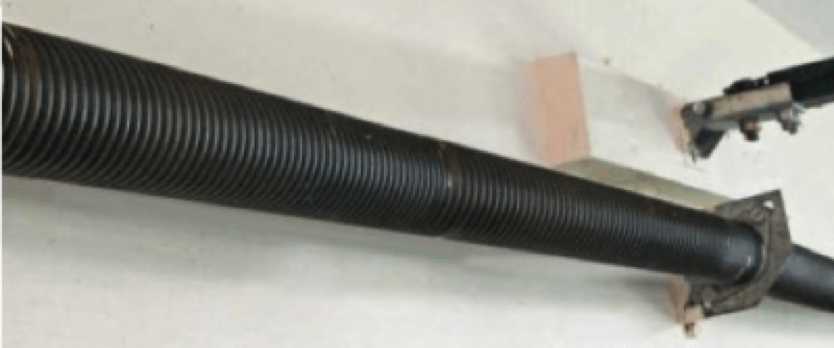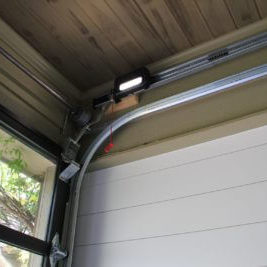
The work of a garage door spring goes unnoticed until it doesn’t work anymore! It’s like your car—you use the engine every day, but until it’s out of service, you really don’t give it much thought. But garage door springs work hard. This is because springs carry a lot of tension to maintain the weight of your door. On top of that, according to Popular Mechanics, an average garage door opens and closes 1,500 times a year! That means your garage door spring has to work hard every day to ensure that operates reliably and safely.
What’s the purpose of a garage door spring?
Garage door springs offset the door’s weight so it can easily open and close. For example, if a garage door weighs 100 pounds, a spring force of 100 pounds needs to pull against the door’s weight in order for it to function properly. Manufacturers accomplish this with metal springs that stretch or torque (a twisting force that tends to cause rotation). These special parts of the door help to balance it and keep it safe for your family.
There are two types of garage door springs: Torsion springs connected above the closed door, and extension springs mounted along the garage door’s sides or above the horizontal tracks. Torsion springs operate by winding and unwinding to lift and lower the door. Extension springs stretch and contract to counterbalance the weight of the garage door. Both of these options will get the job done to move your door, but we prefer torsion springs for a more reliable garage door system long term.
What’s the purpose of a galvanized garage door spring?
Galvanized springs have an iron or steel coating with a protective layer of zinc. This new kind of spring became necessary in the 1990’s when technicians were layering garage door springs with grease to extend their life. However, doing this made a huge mess on the garage door and the garage floor, which added to the work of a technician trying to move on to the next repair. To help, manufacturers created galvanized garage door torsion springs as an alternative to oil-tempered springs. You can tell the difference between the two because galvanized springs are silver and oil-tempered are black.
How do you maintain a galvanized spring?
Even though the introduction of galvanized springs addressed the greasy mess, manufacturers ran into a problem with the spring treating process. They found out that the process of galvanizing weakens metal springs. They discovered this because it seems that galvanized springs need more adjustments over time than do oil-tempered steel springs. This is because, in order to adjust the springs, a garage door technician adds tension to the spring. This, in turn, shortens the life cycle of the galvanized spring.
Because of this, you have to maintain galvanized springs, or they might develop corrosion. Also, because they quickly weaken after a few months, galvanized springs have to be tightened or they relax and wear out. If they are allowed to weaken without maintenance, it could cause your spring to break suddenly and damage your garage door. On top of that, manufacturers make them from a metal that is weaker than oil-tempered springs, which may attribute to a short life cycle.
In the end, galvanized springs are a difficult product to rely on because they need so much maintenance. Hopefully, this helped educate you about different garage door springs.
Contact Us
If this blog article was helpful to you, please like and share so that others might benefit from it, too! Also, if you want to learn more about garage door springs or need a maintenance check for your galvanized springs, contact us!























